http://www.sohu.com/a/310371037_114911

参考消息
5.1万文章 103亿总阅读
查看TA的文章>
0
美媒称洛马对美空军买F-15不满:F-35可能要依赖海外订单
2019-04-26 00:35 空军 /美国 /美军
参考消息网4月26日报道美媒称,洛马公司对美国空军大举采购F-15战机却未扩大F-35列装计划,感到非常失望,并暗示F-35的盈利增长可能来自对该战机兴趣日渐浓厚的亚洲和东欧地区。
美国“防务一号”网站4月24日报道称,洛马公司首席财务官(CFO)波森里德表示,“令我们失望”的是美国空军。他强调,洛马将继续与客户以及政府代表一起探索“正确的道路”。
报道称,美国空军2020财年预算提案显示,计划今后每年采购48架F-35战机,一直持续到2024年。不过预算中也要求首批采购8架最新的F-15EX战机,未来5年将采购80架。
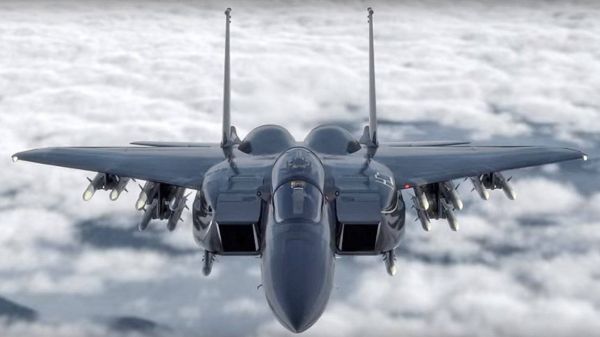
资料图片:美军F-15EX战机视频截图。(图片来源于网络)
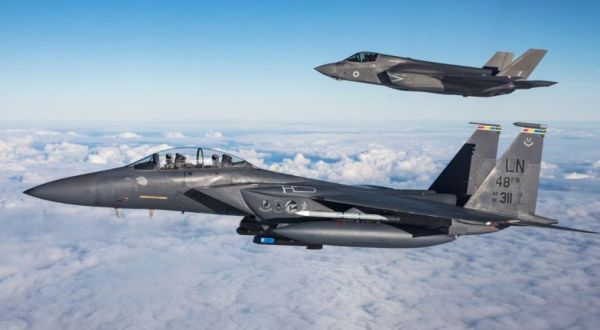
资料图片:美空军F-15E战斗轰炸机与英国空军F-35B隐身战机编队飞行。(图片来源于网络)
美国空军参谋长戴维·戈德费恩希望空军每年采购72架新战机,以保证机队的年轻化。他表示,“如果我们有钱,当然愿意每年购买72架F-35,但是很多时候必须从商业角度来看待这个问题,F-15绝不可能成为F-35,这毫无疑问,但是我们需要保证数量”。
报道称,在五角大楼向国会提交预算申请之后,洛马公司就向国会散发了一份3页的白皮书,详述F-35战机对F-15等4代机的绝对优势。针对广受诟病的成本太高问题,白皮书也指出,在2020财年F-35的单价将降到8000万美元以下,每飞行小时的成本也将降为2.5万美元。
美军F-35项目主管马特·温特表示,尽管土耳其因采购S-400而导致其F-35订单出现变数,但是国际上对这款隐形战机的需求非常强劲。新加坡、希腊、罗马尼亚、西班牙和波兰都对F-35表达了兴趣,而日本已经确认要增购。
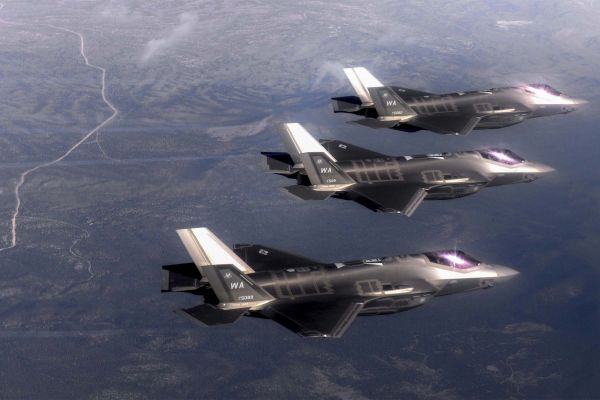
资料图片:美空军F-35A三机编队。(图片来源于网络)返回搜狐,查看更多
声明:该文观点仅代表作者本人,搜狐号系信息发布平台,搜狐仅提供信息存储空间服务
Reference News
51,000 articles
103 billion total reading
View TA's article >
0
share to
US media said that Loma is not satisfied with the US Air Force buying F-15: F-35 may have to rely on overseas orders
2019-04-26 00:35 Air Force / US / US Army
The news network reported on April 26 that the US media said that Loma was very disappointed that the US Air Force had purchased the F-15 fighter aircraft but did not expand the F-35 package plan, and suggested that the profit growth of the F-35 may come from Asian and Eastern European regions with growing fighter interest.
The US "Defense One" website reported on April 24 that Loma's chief financial officer (CFO) Posenried said that "the disappointment" is the US Air Force. He stressed that Loma will continue to explore the "right path" with customers and government representatives.
According to the report, the US Air Force's 2020 fiscal year budget proposal shows that it plans to purchase 48 F-35 fighters each year until 2024. However, the budget also requires the first batch of 8 new F-15EX fighters to be purchased, and 80 will be purchased in the next five years.
Profile picture: US military F-15EX fighter video screenshot. (Image from the network)
Profile photo: US Air Force F-15E fighter-bomber and British Air Force F-35B stealth fighter formation flight. (Image from the network)
US Air Force Chief of Staff David Goldfern hopes that the Air Force will purchase 72 new fighters each year to ensure the younger team. He said, "If we have money, of course we are willing to buy 72 F-35s a year, but many times we must look at this issue from a commercial point of view. The F-15 can never be an F-35. There is no doubt, but we need Guaranteed quantity."
According to the report, after the Pentagon submitted a budget application to the Congress, Loma Company distributed a three-page white paper to the Congress, detailing the absolute superiority of the F-35 fighter to the 4th generation of the F-15. In response to the high cost of being criticized, the white paper also pointed out that in the fiscal year 2020, the unit price of the F-35 will drop below 80 million US dollars, and the cost per flight hour will be reduced to 25,000 US dollars.
US military F-35 project director Matt Winter said that although Turkey's F-35 orders have changed due to the purchase of S-400, the demand for this stealth fighter is very strong internationally. Singapore, Greece, Romania, Spain and Poland all expressed interest in the F-35, and Japan has confirmed that it will purchase more.
Profile picture: US Air Force F-35A three-machine formation. (Image from the network) Return to Sohu, see more
Disclaimer: This article only represents the author himself, Sohu is the information publishing platform, and Sohu only provides information storage space service.
https://www.popularmechanics.com/military/aviation/a26413900/air-force-buying-new-f-15/
The U.S. Air Force Is Buying New F-15s After All
The F-15X will complement the F-22 and F-35 in tomorrow's aerial battlefields.

By Kyle Mizokami
Feb 19, 2019
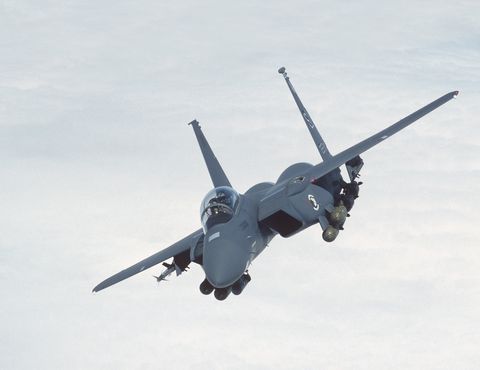
aviation-images.comGetty Images
The U.S. Air Force will go ahead and buy brand-new F-15s even as it purchases large numbers of the F-35 Joint Strike Fighter. Updated with the latest technology, the F-15X can carry nearly two dozen air-to-air missiles and will likely work together with stealth jets to take on fleets of enemy fighters.
An article at Bloomberg has revealed that the USAF will request eight F-15X fighters in its budget. The service plans to buy 80 fighters over five years. That's enough to fit out a wing of 72 aircraft, divided into three squadrons of 24 planes each, with eight spares. That's just the five-year projection, though, and the service may buy additional fighters beyond 2025.
The F-15X will come in two versions, a single-seat F-15CX and a twin-seat F-15EX. According to Aviation Week & Space Technology, other than crew size the two jets will be identical. Here's a Boeing promotional video for the F-15X, also known as Advanced Eagle.
F-15X is a thoroughly modern update of the F-15 Eagle air superiority fighter first introduced in the 1970s. Most of the updates it has are already flying in F-15s produced for other countries, with research and development already paid for by nations such as Saudi Arabia and Qatar. These include strengthened airframes for increased maneuverability and airframe life span, giving the advanced fighter an even greater dogfighting capability over the original F-15 and an impressive airframe life span of 20,000 hours.
The F-15X will also include large flat-panel displays for displaying aircraft information, conformal fuel tanks to give it a longer range, a digital fly-by-wire control system, a new APG-82 radar, and the Eagle Passive Active Warning Survivability System (EPAWSS) for protection from air-to-air missiles.
One thing the F-15X doesn’t have is stealth capability, at least to the extent of new or new-ish aircraft such as the F-22 Raptor and F-35. The F-15 airframe was designed before stealth became a thing, and there’s not much, other than using radar-absorbing coatings, that can be done to retrofit a reduced radar signature. So, instead of being hard to spot, the F-15X will be armed to the teeth. The plane will use new AMBER missile racks to nearly triple the aircraft’s air-to-air missile capability, from 8 to 22.
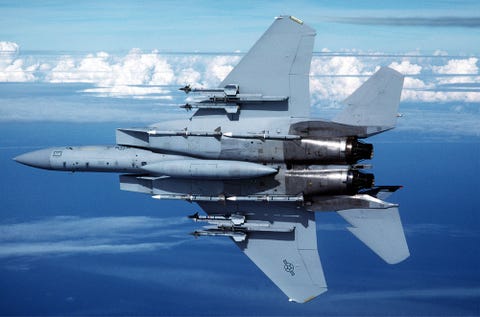
An F-15C fighter with a typical F-15 air superiority loadout of 4 AIM-9 Sidewinder and 4 AIM-120 AMRAAM missiles. The F-15CX will carry nearly three times as many air-to-air missiles.
USAFGetty Images
Why does the Air Force want to buy a better version of an older non-stealth fighter when it's already got plenty of F-35s on the way? The running theory is that the F-15X will complement the F-22 Raptor and the F-35 Joint Strike Fighter in the air combat mission. The F-22 and F-35 can carry only six and four air-to-air missiles respectively, tucked away in internal weapons bays. Both jets can tack on external pylons to carry more weapons, but doing so would ruin their carefully designed stealth profiles. In combat, the Air Force could pair an F-35 Joint Strike Fighter with an F-15X, with the F-35 remaining hidden from enemy sensors and quietly marking targets for the F-15X to kill. With up to 22 missiles on the F-15X, this combination could take out a lot of enemy aircraft before running out of ammunition.
Another theoretical mission for the F-15X would be the suppression of enemy air defenses. Such units are specifically trained and equipped to hunt down air-defense systems on the ground, identifying them and targeting them with radar-homing missiles. Currently, this mission is assigned to single-seat F-16 fighters. A two-seat aircraft with plenty of room for electronic warfare pods and munitions racks—and air-to-air missiles in case enemy fighters come calling—would make for a great "Wild Weasel," as these planes are frequently called.
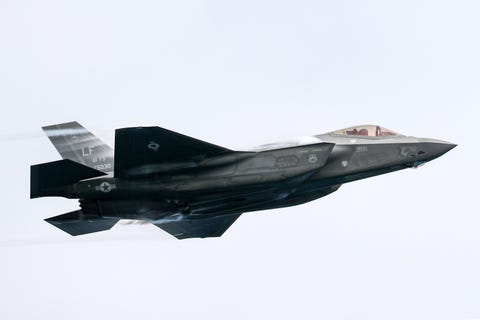
A U.S. Air Force F-35A performing over Lake Michigan, August 2018.
Anadolu AgencyGetty Images
Supporters say the F-15X is meant to complement, not replace, the F-35. The lack of stealth makes it pretty clear the F-15X can never replace a stealthy fighter, but it can make stealth fighters better by acting as a flying magazine for jets that can only carry a limited number of missiles. At $80 million the F-15X is a relatively inexpensive way to triple or even quadruple the firepower of a pair of USAF fighter jets.
Detractors counter that the F-15X takes funding away from the F-35 Joint Strike Fighter. Although the Air Force plans to keep buying the same number of F-35s as it did before, those opposing the F-15X buy say that the new money could be used for more F-35s. Detractors argue that, given the increasingly sophisticated air and ground threats to aircraft, all new aircraft should be stealth aircraft.
The F-15X looks to be a “go,” but a lot can happen in five years. If the defense budget remains flat or begins to contract over the next two years, buying a new fighter could go out the window, especially if only 80 aircraft are planned.
Via Bloomberg
https://www.defensenews.com/intervi...and-improved-f-15-and-future-of-light-attack/
https://www.defensenews.com/opinion...r-the-us-air-force-is-unsolicited-and-unwise/
Buying new F-15X fighters for the US Air Force is unsolicited and unwise
By: Gen. John Michael Loh (ret.) March 4
AddThis Sharing Buttons
Share to Facebook
Share to TwitterShare to EmailShare to More
27
/arc-anglerfish-arc2-prod-mco.s3.amazonaws.com/public/XIYOEAKHY5CYHIH5AHNID2Q7BE.jpg) The sun shines over a display model of the F-15 Eagle on Sept. 29, 2015, at the Luke Air Force Base Air Park. (Airman 1st Class Ridge Shan/U.S. Air Force)
The sun shines over a display model of the F-15 Eagle on Sept. 29, 2015, at the Luke Air Force Base Air Park. (Airman 1st Class Ridge Shan/U.S. Air Force)
Although President Calvin Coolidge was not an expert on air power, his famous quote, “Nothing in this world can take the place of persistence,” should be studied and practiced today by leaders in the Office of the Secretary of Defense and the U.S. Air Force. The OSD’s decision to renege on the Air Force goal of procuring only fifth-generation F-35A fighters and, instead, budget for new fourth-generation F-15Xs in the Air Force budget shows both a lack of persistence and sound logic. It also weakens Air Force support to grow its fighter force and obtain a healthy return on its large F-35A investment, and it adds to the growing list of new programs the Air Force must fund.
In just six months the Air Force appears to have changed its modernization priorities. At the Air Force Association convention in September 2018, Secretary Heather Wilson announced the goal of expanding the force size from 312 to 386 operational squadrons that included seven new fighter squadrons. There was no mention of ever buying new fourth-generation fighters — only the F-35A.
But now we learn that OSD is the driver in the F-15X decision. At an AFA symposium on Feb. 28 in Orlando, Florida, Wilson acknowledged that the Air Force budget for 2020, when submitted to OSD, “did not include additional fourth-generation aircraft.” The F-15X was added by OSD, and apparently Air Force leadership has not been able to change minds in OSD.
Over the past 15 years, the Air Force has been both consistent and persistent in advocating only the new fifth-generation, stealthy F-35A and retiring over time its non-stealthy fourth-generation F-15s and F-16s. Now, the goal announced by the Air Force is to procure 72 new fighters per year including both F-35As and F-15Xs.
/arc-anglerfish-arc2-prod-mco.s3.amazonaws.com/public/ALYYLZXZLBC7PLJ2ASCE43GGJI.jpg)
Lawmakers stand ready to protect F-35 from F-15X budget threats
Air Force leaders say their commitment to the F-35 is ironclad. Supporters of the program aim to ensure it stays that way.
By: Valerie Insinna
The need to deal with great power competition from Russia and China, plus the deployment of advanced air defense systems like the Russian S-400 covering eastern Europe and southwest Asia, has provided overwhelming justification to modernize the Air Force fighter fleet with only F-22s and F-35As which can penetrate these defenses effectively and destroy modern air defenses.
The F-15s and F-16s are no longer able to penetrate and survive, and their effectiveness will only decrease over time. So the OSD decision to add F-15Xs in the Air Force budget is puzzling — a step backward.
Moreover, introducing the F-15X will not allow the Air Force to increase its F-35A annual production rate above 48-60 per year, a far cry from the 84-96 per year in its plans, and thus reducing the return on its investment. The Air Force learned in the F-22 and B-2 programs that continually reducing the annual buys created an acquisition death spiral because buying fewer led to ever-increasing unit costs that further led to their becoming unaffordable, therefore unviable.
Sign up for our Early Bird Brief
Get the defense industry's most comprehensive news and information straight to your inbox
The business case for the F-35 was to generate high annual production rates for more than 20 years at low-unit flyaway costs, a huge return on investment much like the F-16 program. That goal now appears unlikely.
The Air Force is attempting to rationalize the OSD decision by criticizing the sustainment costs of the F-35A and invoking the term “increased capacity” with the F-15X. F-35A sustainment has growing pains like any new weapon system. They will come down over time. The Air Force has not defined “increased capacity,” but no amount of capacity can overcome an inability to penetrate modern defenses and destroy high-value targets — severe limitations of the F-15X.
Air Force leaders have a chance to practice Coolidge’s admonition about persistence by finding a way to increase F-35A annual production so it can reach their goal of an all-stealthy fighter force necessary to deal with the modern threats fielded by great power competitors. They cannot achieve this goal buying new, non-stealthy fighters at the expense of F-35As.
Gen. John Michael Loh (ret.) served as the U.S. Air Force vice chief of staff and the commander of Air Combat Command.
https://nationalinterest.org/blog/buzz/air-force-official-f-15-not-f-35-it-will-never-be-f-35-50792
https://www.bloomberg.com/news/arti...ght-upgraded-boeing-fighters-along-with-f-35s
politics
Air Force Wants Eight Upgraded Boeing Fighters Along With F-35s
By
Anthony Capaccio
February 19, 2019, 5:00 PM GMT+8

A U.S. Air Force F-15. Photographer: U.S. Air Force
The U.S. Air Force’s next budget will request funds for eight new F-15 fighter-bombers from Boeing Co., beefing up its inventory with an upgraded version of a plane it last bought in 2001, even as it pursues the more advanced F-35 from rival Lockheed Martin Corp.
The F-15s will be proposed in the fiscal 2020 budget, expected around March 11, as the first of a potential 80-plane purchase over the next five years, said people familiar with the Air Force’s plan.
Even though the request has White House support, it’s likely to raise questions from skeptical lawmakers about why the Air Force, which has spent years saying it needs the “fifth-generation” F-35, now wants more F-15s as well.
Boeing has kept its F-15 production line in St. Louis going with continued sales to allies including Israel, Saudi Arabia and Qatar. The new F-15X for the U.S. would be a variation on planes sold to Qatar but would be able to carry heavier loads of air-to-ground and air-to-air weapons than current F-15s, or the F-35s.
Hypersonic Missiles
With its internal weapons carriage, the F-35 probably can’t accommodate planned heavier weapons, such as hypersonic missiles that are now under development. On the other hand, the F-15X would lack the technological advances of the F-35, including its stealth profile to evade the most advanced Russian and Chinese air defense systems, as well as its sophisticated sensors and data-sharing capabilities.
The Air Force will propose buying the F-15X without reducing the fleet of 1,763 F-35s that it has long planned, the people said. The service would purchase 48 of the 84 F-35s that were called for last year in the Pentagon’s plan for 2020, with the remainder going to the Navy and Marines, according to program documents.
Still, Lockheed has been quietly reminding lawmakers and congressional staff of its arguments for the F-35 as the better choice, including through a “fact sheet” distributed in December. That was followed by an attack on the F-15X by five senators who wrote President Donald Trump last week calling the Boeing plane “outdated.”

A U.S. Air Force F-35.
Source: Lockheed Martin
“The U.S. Air Force fighter budget is unlikely to grow by much, so the fear is that replacing the F-15 fleet, rather than upgrading the old F-15s, would take cash away from F-35 procurement,” Richard Aboulafia, an aerospace analyst with the Teal Group of Fairfax, Virginia, said in an email.
Boeing said in a statement that it’s “ready to provide a highly survivable advanced variant of F-15 to the Air Force at an affordable cost.” A spokesman for the Air Force declined to comment on the proposal until the president’s proposed budget is released.
Budget Officials
The planned F-15X purchase originated from an assessment of the Air Force’s needs by career analysts in the Pentagon’s independent cost assessment office. It’s won favor from White House budget officials who agreed it would fill a niche for an aircraft capable of carrying a heavy load of ordnance, according to one of the people.
Chicago-based Boeing has offered the aircraft, including engines, for about $80 million per plane under a fixed-price contract with the first deliveries to come in 2022. By comparison, the F-35 from Bethesda, Maryland-based Lockheed is estimated to cost $89 million each in the latest contract with a goal of $80 million by 2020.
Lockheed’s December “fact sheet” said the F-15X would cost $90 million each and have less range, acceleration and time to remain over a target than the F-35.
Lockheed spokesman William Phelps said the document was prepared for a Dec. 13 congressional briefing and was consistent with ones the company has produced for years comparing the F-35 to older fighters.
Marillyn Hewson, Lockheed’s chief executive officer, told analysts in January that she’s hearing “directly from leadership in the Pentagon” that the F-35 is “well-supported across-the-board” so it wouldn’t be affected by a potential F-15 purchase.
Still, two of Lockheed’s strongest congressional supporters, Republican Senators John Cornyn and Ted Cruz of Texas, drew up the letter to Trump warning against underfunding the F-35 that’s built in their state in order to buy the F-15X.
— With assistance by Roxana Tiron

参考消息
5.1万文章 103亿总阅读
查看TA的文章>
0
- 分享到
美媒称洛马对美空军买F-15不满:F-35可能要依赖海外订单
2019-04-26 00:35 空军 /美国 /美军
参考消息网4月26日报道美媒称,洛马公司对美国空军大举采购F-15战机却未扩大F-35列装计划,感到非常失望,并暗示F-35的盈利增长可能来自对该战机兴趣日渐浓厚的亚洲和东欧地区。
美国“防务一号”网站4月24日报道称,洛马公司首席财务官(CFO)波森里德表示,“令我们失望”的是美国空军。他强调,洛马将继续与客户以及政府代表一起探索“正确的道路”。
报道称,美国空军2020财年预算提案显示,计划今后每年采购48架F-35战机,一直持续到2024年。不过预算中也要求首批采购8架最新的F-15EX战机,未来5年将采购80架。

资料图片:美军F-15EX战机视频截图。(图片来源于网络)

资料图片:美空军F-15E战斗轰炸机与英国空军F-35B隐身战机编队飞行。(图片来源于网络)
美国空军参谋长戴维·戈德费恩希望空军每年采购72架新战机,以保证机队的年轻化。他表示,“如果我们有钱,当然愿意每年购买72架F-35,但是很多时候必须从商业角度来看待这个问题,F-15绝不可能成为F-35,这毫无疑问,但是我们需要保证数量”。
报道称,在五角大楼向国会提交预算申请之后,洛马公司就向国会散发了一份3页的白皮书,详述F-35战机对F-15等4代机的绝对优势。针对广受诟病的成本太高问题,白皮书也指出,在2020财年F-35的单价将降到8000万美元以下,每飞行小时的成本也将降为2.5万美元。
美军F-35项目主管马特·温特表示,尽管土耳其因采购S-400而导致其F-35订单出现变数,但是国际上对这款隐形战机的需求非常强劲。新加坡、希腊、罗马尼亚、西班牙和波兰都对F-35表达了兴趣,而日本已经确认要增购。

资料图片:美空军F-35A三机编队。(图片来源于网络)返回搜狐,查看更多
声明:该文观点仅代表作者本人,搜狐号系信息发布平台,搜狐仅提供信息存储空间服务
Reference News
51,000 articles
103 billion total reading
View TA's article >
0
share to
US media said that Loma is not satisfied with the US Air Force buying F-15: F-35 may have to rely on overseas orders
2019-04-26 00:35 Air Force / US / US Army
The news network reported on April 26 that the US media said that Loma was very disappointed that the US Air Force had purchased the F-15 fighter aircraft but did not expand the F-35 package plan, and suggested that the profit growth of the F-35 may come from Asian and Eastern European regions with growing fighter interest.
The US "Defense One" website reported on April 24 that Loma's chief financial officer (CFO) Posenried said that "the disappointment" is the US Air Force. He stressed that Loma will continue to explore the "right path" with customers and government representatives.
According to the report, the US Air Force's 2020 fiscal year budget proposal shows that it plans to purchase 48 F-35 fighters each year until 2024. However, the budget also requires the first batch of 8 new F-15EX fighters to be purchased, and 80 will be purchased in the next five years.
Profile picture: US military F-15EX fighter video screenshot. (Image from the network)
Profile photo: US Air Force F-15E fighter-bomber and British Air Force F-35B stealth fighter formation flight. (Image from the network)
US Air Force Chief of Staff David Goldfern hopes that the Air Force will purchase 72 new fighters each year to ensure the younger team. He said, "If we have money, of course we are willing to buy 72 F-35s a year, but many times we must look at this issue from a commercial point of view. The F-15 can never be an F-35. There is no doubt, but we need Guaranteed quantity."
According to the report, after the Pentagon submitted a budget application to the Congress, Loma Company distributed a three-page white paper to the Congress, detailing the absolute superiority of the F-35 fighter to the 4th generation of the F-15. In response to the high cost of being criticized, the white paper also pointed out that in the fiscal year 2020, the unit price of the F-35 will drop below 80 million US dollars, and the cost per flight hour will be reduced to 25,000 US dollars.
US military F-35 project director Matt Winter said that although Turkey's F-35 orders have changed due to the purchase of S-400, the demand for this stealth fighter is very strong internationally. Singapore, Greece, Romania, Spain and Poland all expressed interest in the F-35, and Japan has confirmed that it will purchase more.
Profile picture: US Air Force F-35A three-machine formation. (Image from the network) Return to Sohu, see more
Disclaimer: This article only represents the author himself, Sohu is the information publishing platform, and Sohu only provides information storage space service.
https://www.popularmechanics.com/military/aviation/a26413900/air-force-buying-new-f-15/
The U.S. Air Force Is Buying New F-15s After All
The F-15X will complement the F-22 and F-35 in tomorrow's aerial battlefields.

By Kyle Mizokami
Feb 19, 2019

aviation-images.comGetty Images
The U.S. Air Force will go ahead and buy brand-new F-15s even as it purchases large numbers of the F-35 Joint Strike Fighter. Updated with the latest technology, the F-15X can carry nearly two dozen air-to-air missiles and will likely work together with stealth jets to take on fleets of enemy fighters.
An article at Bloomberg has revealed that the USAF will request eight F-15X fighters in its budget. The service plans to buy 80 fighters over five years. That's enough to fit out a wing of 72 aircraft, divided into three squadrons of 24 planes each, with eight spares. That's just the five-year projection, though, and the service may buy additional fighters beyond 2025.
The F-15X will come in two versions, a single-seat F-15CX and a twin-seat F-15EX. According to Aviation Week & Space Technology, other than crew size the two jets will be identical. Here's a Boeing promotional video for the F-15X, also known as Advanced Eagle.
F-15X is a thoroughly modern update of the F-15 Eagle air superiority fighter first introduced in the 1970s. Most of the updates it has are already flying in F-15s produced for other countries, with research and development already paid for by nations such as Saudi Arabia and Qatar. These include strengthened airframes for increased maneuverability and airframe life span, giving the advanced fighter an even greater dogfighting capability over the original F-15 and an impressive airframe life span of 20,000 hours.
The F-15X will also include large flat-panel displays for displaying aircraft information, conformal fuel tanks to give it a longer range, a digital fly-by-wire control system, a new APG-82 radar, and the Eagle Passive Active Warning Survivability System (EPAWSS) for protection from air-to-air missiles.
One thing the F-15X doesn’t have is stealth capability, at least to the extent of new or new-ish aircraft such as the F-22 Raptor and F-35. The F-15 airframe was designed before stealth became a thing, and there’s not much, other than using radar-absorbing coatings, that can be done to retrofit a reduced radar signature. So, instead of being hard to spot, the F-15X will be armed to the teeth. The plane will use new AMBER missile racks to nearly triple the aircraft’s air-to-air missile capability, from 8 to 22.

An F-15C fighter with a typical F-15 air superiority loadout of 4 AIM-9 Sidewinder and 4 AIM-120 AMRAAM missiles. The F-15CX will carry nearly three times as many air-to-air missiles.
USAFGetty Images
Why does the Air Force want to buy a better version of an older non-stealth fighter when it's already got plenty of F-35s on the way? The running theory is that the F-15X will complement the F-22 Raptor and the F-35 Joint Strike Fighter in the air combat mission. The F-22 and F-35 can carry only six and four air-to-air missiles respectively, tucked away in internal weapons bays. Both jets can tack on external pylons to carry more weapons, but doing so would ruin their carefully designed stealth profiles. In combat, the Air Force could pair an F-35 Joint Strike Fighter with an F-15X, with the F-35 remaining hidden from enemy sensors and quietly marking targets for the F-15X to kill. With up to 22 missiles on the F-15X, this combination could take out a lot of enemy aircraft before running out of ammunition.
Another theoretical mission for the F-15X would be the suppression of enemy air defenses. Such units are specifically trained and equipped to hunt down air-defense systems on the ground, identifying them and targeting them with radar-homing missiles. Currently, this mission is assigned to single-seat F-16 fighters. A two-seat aircraft with plenty of room for electronic warfare pods and munitions racks—and air-to-air missiles in case enemy fighters come calling—would make for a great "Wild Weasel," as these planes are frequently called.

A U.S. Air Force F-35A performing over Lake Michigan, August 2018.
Anadolu AgencyGetty Images
Supporters say the F-15X is meant to complement, not replace, the F-35. The lack of stealth makes it pretty clear the F-15X can never replace a stealthy fighter, but it can make stealth fighters better by acting as a flying magazine for jets that can only carry a limited number of missiles. At $80 million the F-15X is a relatively inexpensive way to triple or even quadruple the firepower of a pair of USAF fighter jets.
Detractors counter that the F-15X takes funding away from the F-35 Joint Strike Fighter. Although the Air Force plans to keep buying the same number of F-35s as it did before, those opposing the F-15X buy say that the new money could be used for more F-35s. Detractors argue that, given the increasingly sophisticated air and ground threats to aircraft, all new aircraft should be stealth aircraft.
The F-15X looks to be a “go,” but a lot can happen in five years. If the defense budget remains flat or begins to contract over the next two years, buying a new fighter could go out the window, especially if only 80 aircraft are planned.
Via Bloomberg
https://www.defensenews.com/intervi...and-improved-f-15-and-future-of-light-attack/
https://www.defensenews.com/opinion...r-the-us-air-force-is-unsolicited-and-unwise/
Buying new F-15X fighters for the US Air Force is unsolicited and unwise
By: Gen. John Michael Loh (ret.) March 4
AddThis Sharing Buttons
Share to Facebook
Share to TwitterShare to EmailShare to More
27
/arc-anglerfish-arc2-prod-mco.s3.amazonaws.com/public/XIYOEAKHY5CYHIH5AHNID2Q7BE.jpg)
Although President Calvin Coolidge was not an expert on air power, his famous quote, “Nothing in this world can take the place of persistence,” should be studied and practiced today by leaders in the Office of the Secretary of Defense and the U.S. Air Force. The OSD’s decision to renege on the Air Force goal of procuring only fifth-generation F-35A fighters and, instead, budget for new fourth-generation F-15Xs in the Air Force budget shows both a lack of persistence and sound logic. It also weakens Air Force support to grow its fighter force and obtain a healthy return on its large F-35A investment, and it adds to the growing list of new programs the Air Force must fund.
In just six months the Air Force appears to have changed its modernization priorities. At the Air Force Association convention in September 2018, Secretary Heather Wilson announced the goal of expanding the force size from 312 to 386 operational squadrons that included seven new fighter squadrons. There was no mention of ever buying new fourth-generation fighters — only the F-35A.
But now we learn that OSD is the driver in the F-15X decision. At an AFA symposium on Feb. 28 in Orlando, Florida, Wilson acknowledged that the Air Force budget for 2020, when submitted to OSD, “did not include additional fourth-generation aircraft.” The F-15X was added by OSD, and apparently Air Force leadership has not been able to change minds in OSD.
Over the past 15 years, the Air Force has been both consistent and persistent in advocating only the new fifth-generation, stealthy F-35A and retiring over time its non-stealthy fourth-generation F-15s and F-16s. Now, the goal announced by the Air Force is to procure 72 new fighters per year including both F-35As and F-15Xs.
/arc-anglerfish-arc2-prod-mco.s3.amazonaws.com/public/ALYYLZXZLBC7PLJ2ASCE43GGJI.jpg)
Lawmakers stand ready to protect F-35 from F-15X budget threats
Air Force leaders say their commitment to the F-35 is ironclad. Supporters of the program aim to ensure it stays that way.
By: Valerie Insinna
The need to deal with great power competition from Russia and China, plus the deployment of advanced air defense systems like the Russian S-400 covering eastern Europe and southwest Asia, has provided overwhelming justification to modernize the Air Force fighter fleet with only F-22s and F-35As which can penetrate these defenses effectively and destroy modern air defenses.
The F-15s and F-16s are no longer able to penetrate and survive, and their effectiveness will only decrease over time. So the OSD decision to add F-15Xs in the Air Force budget is puzzling — a step backward.
Moreover, introducing the F-15X will not allow the Air Force to increase its F-35A annual production rate above 48-60 per year, a far cry from the 84-96 per year in its plans, and thus reducing the return on its investment. The Air Force learned in the F-22 and B-2 programs that continually reducing the annual buys created an acquisition death spiral because buying fewer led to ever-increasing unit costs that further led to their becoming unaffordable, therefore unviable.
Sign up for our Early Bird Brief
Get the defense industry's most comprehensive news and information straight to your inbox
The business case for the F-35 was to generate high annual production rates for more than 20 years at low-unit flyaway costs, a huge return on investment much like the F-16 program. That goal now appears unlikely.
The Air Force is attempting to rationalize the OSD decision by criticizing the sustainment costs of the F-35A and invoking the term “increased capacity” with the F-15X. F-35A sustainment has growing pains like any new weapon system. They will come down over time. The Air Force has not defined “increased capacity,” but no amount of capacity can overcome an inability to penetrate modern defenses and destroy high-value targets — severe limitations of the F-15X.
Air Force leaders have a chance to practice Coolidge’s admonition about persistence by finding a way to increase F-35A annual production so it can reach their goal of an all-stealthy fighter force necessary to deal with the modern threats fielded by great power competitors. They cannot achieve this goal buying new, non-stealthy fighters at the expense of F-35As.
Gen. John Michael Loh (ret.) served as the U.S. Air Force vice chief of staff and the commander of Air Combat Command.
https://nationalinterest.org/blog/buzz/air-force-official-f-15-not-f-35-it-will-never-be-f-35-50792
https://www.bloomberg.com/news/arti...ght-upgraded-boeing-fighters-along-with-f-35s
politics
Air Force Wants Eight Upgraded Boeing Fighters Along With F-35s
By
Anthony Capaccio
February 19, 2019, 5:00 PM GMT+8
- Five-year plan calls for buying 80 of the F-15X planes
- Rival Lockheed talks down plane’s capability versus its F-35

A U.S. Air Force F-15. Photographer: U.S. Air Force
The U.S. Air Force’s next budget will request funds for eight new F-15 fighter-bombers from Boeing Co., beefing up its inventory with an upgraded version of a plane it last bought in 2001, even as it pursues the more advanced F-35 from rival Lockheed Martin Corp.
The F-15s will be proposed in the fiscal 2020 budget, expected around March 11, as the first of a potential 80-plane purchase over the next five years, said people familiar with the Air Force’s plan.
Even though the request has White House support, it’s likely to raise questions from skeptical lawmakers about why the Air Force, which has spent years saying it needs the “fifth-generation” F-35, now wants more F-15s as well.
Boeing has kept its F-15 production line in St. Louis going with continued sales to allies including Israel, Saudi Arabia and Qatar. The new F-15X for the U.S. would be a variation on planes sold to Qatar but would be able to carry heavier loads of air-to-ground and air-to-air weapons than current F-15s, or the F-35s.
Hypersonic Missiles
With its internal weapons carriage, the F-35 probably can’t accommodate planned heavier weapons, such as hypersonic missiles that are now under development. On the other hand, the F-15X would lack the technological advances of the F-35, including its stealth profile to evade the most advanced Russian and Chinese air defense systems, as well as its sophisticated sensors and data-sharing capabilities.
The Air Force will propose buying the F-15X without reducing the fleet of 1,763 F-35s that it has long planned, the people said. The service would purchase 48 of the 84 F-35s that were called for last year in the Pentagon’s plan for 2020, with the remainder going to the Navy and Marines, according to program documents.
Still, Lockheed has been quietly reminding lawmakers and congressional staff of its arguments for the F-35 as the better choice, including through a “fact sheet” distributed in December. That was followed by an attack on the F-15X by five senators who wrote President Donald Trump last week calling the Boeing plane “outdated.”

A U.S. Air Force F-35.
Source: Lockheed Martin
“The U.S. Air Force fighter budget is unlikely to grow by much, so the fear is that replacing the F-15 fleet, rather than upgrading the old F-15s, would take cash away from F-35 procurement,” Richard Aboulafia, an aerospace analyst with the Teal Group of Fairfax, Virginia, said in an email.
Boeing said in a statement that it’s “ready to provide a highly survivable advanced variant of F-15 to the Air Force at an affordable cost.” A spokesman for the Air Force declined to comment on the proposal until the president’s proposed budget is released.
Budget Officials
The planned F-15X purchase originated from an assessment of the Air Force’s needs by career analysts in the Pentagon’s independent cost assessment office. It’s won favor from White House budget officials who agreed it would fill a niche for an aircraft capable of carrying a heavy load of ordnance, according to one of the people.
Chicago-based Boeing has offered the aircraft, including engines, for about $80 million per plane under a fixed-price contract with the first deliveries to come in 2022. By comparison, the F-35 from Bethesda, Maryland-based Lockheed is estimated to cost $89 million each in the latest contract with a goal of $80 million by 2020.
Lockheed’s December “fact sheet” said the F-15X would cost $90 million each and have less range, acceleration and time to remain over a target than the F-35.
Lockheed spokesman William Phelps said the document was prepared for a Dec. 13 congressional briefing and was consistent with ones the company has produced for years comparing the F-35 to older fighters.
Marillyn Hewson, Lockheed’s chief executive officer, told analysts in January that she’s hearing “directly from leadership in the Pentagon” that the F-35 is “well-supported across-the-board” so it wouldn’t be affected by a potential F-15 purchase.
Still, two of Lockheed’s strongest congressional supporters, Republican Senators John Cornyn and Ted Cruz of Texas, drew up the letter to Trump warning against underfunding the F-35 that’s built in their state in order to buy the F-15X.
— With assistance by Roxana Tiron
